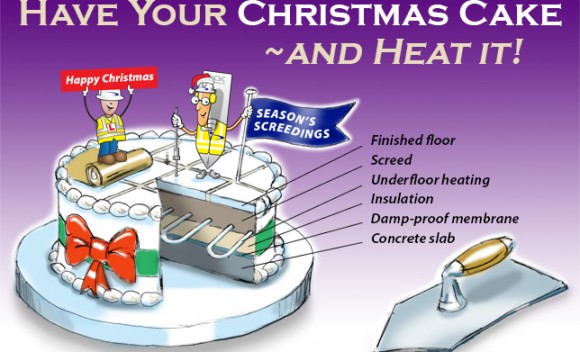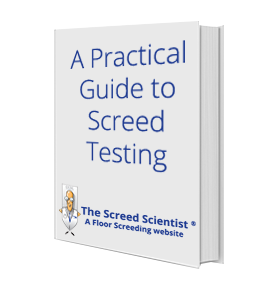
Is it Christmas already?? 2014 has absolutely sped by.
Our mission to be informative, helpful and educational in all matters screeding, continues unabated. With the approaching Christmas shutdown the screed scientist wants to remind you to make sure your screed and screeding materials are well protected before you go away.
Winter brings with it freezing temperatures, wind and rain. Horrible conditions to work in, but if your projects will be screeded over the winter months then you may need to plan extra time for material transportation, drying and curing and screed protection.
Did you see our Screed Apprentice abseil down the ArcelorMittal this year? What’s that you say Screed Doctor…oh no he didn’t….Oh yes he did…..Oh no he didn’t……Oh yes he….oh you’re right he didn’t. It was the winning team on BBC’s The Apprentice. ..If you’ve been following the Apprentice this year, you’d have seen one of the winning teams abseiling down the Arcelor Mittal tower. This wonderfully quirky landmark was screeded in below freezing temperatures by our friends at CSC Screeding who were kind enough to share their experience of screeding in extremely cold weather with us.
1. Screed needs extra care in cold temperatures. Keep the heat in for at least 5 days to make sure the screed is cured and is strong enough to take traffic. We suggest cardboard or hessian. In extreme cases you may need heaters to raise the air temperature to 5 degrees or above.
2. Make sure your supplies are sheltered away from snow and rain. Moisture in sand or cement can affect the consistency of the screed mixture and the final finish.
3. Screed takes longer to dry in cold weather: You may need to alter your proposed project timelines or think about a fast drying screed. But whatever you chose, test your screed to check it is completely dry before laying the final floor finish.
If you have any doubts over the quality of your screed, then test it. Remember, that the screed will take longer to dry in colder weather and the Calcium Carbide test will check whether the Screed is dry all the way through, not just the surface. If your screed has frozen, the integrity of the screed could be damaged, leading to failure in service. A BRE drop hammer test is simple to administer and will tell you whether the hardness and soundness of screed has been affected. Once you are certain the screed has been unaffected, you can lay your final floor finish.
If your screed isn’t protected from the elements over the Christmas break, then you may come back to site and find that you will have to re-do the screed. Extra expense and a waste of time. Nobody wants that -least of all your clients. If you want to know more about screed protection, we have many articles on the Screed Scientist website to help you.
Next year the screed doctor will start a screed clinic to answer your screeding questions. So ask us your questions on testing or protection, tell us if you need to know more about composition or scabbling, drop us a line if you are still scratching your head about drying times and cure times. Send your questions in via email on info@cscscreeding.co.uk







